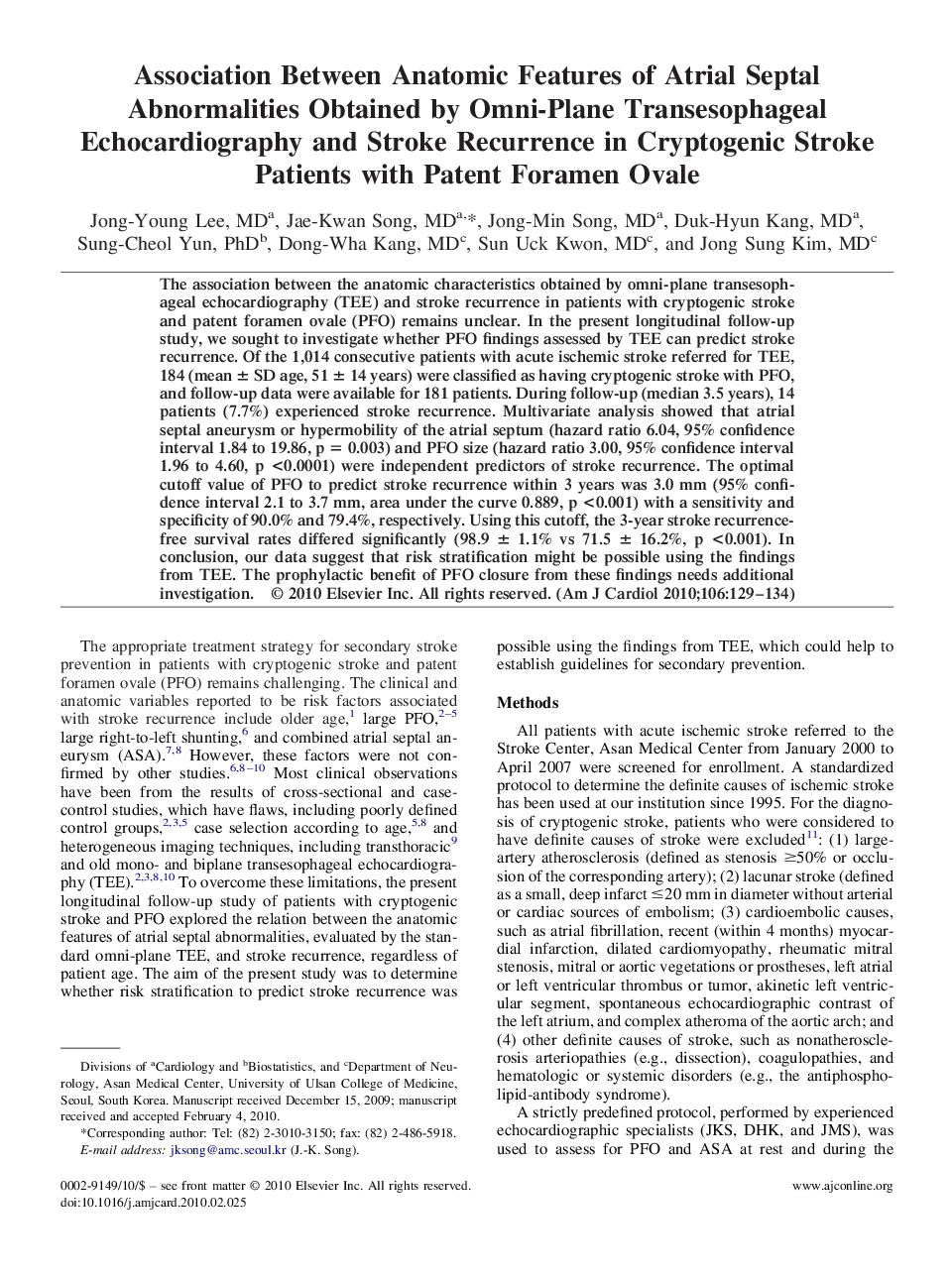| Article ID | Journal | Published Year | Pages | File Type |
|---|---|---|---|---|
| 2857442 | The American Journal of Cardiology | 2010 | 6 Pages |
The association between the anatomic characteristics obtained by omni-plane transesophageal echocardiography (TEE) and stroke recurrence in patients with cryptogenic stroke and patent foramen ovale (PFO) remains unclear. In the present longitudinal follow-up study, we sought to investigate whether PFO findings assessed by TEE can predict stroke recurrence. Of the 1,014 consecutive patients with acute ischemic stroke referred for TEE, 184 (mean ± SD age, 51 ± 14 years) were classified as having cryptogenic stroke with PFO, and follow-up data were available for 181 patients. During follow-up (median 3.5 years), 14 patients (7.7%) experienced stroke recurrence. Multivariate analysis showed that atrial septal aneurysm or hypermobility of the atrial septum (hazard ratio 6.04, 95% confidence interval 1.84 to 19.86, p = 0.003) and PFO size (hazard ratio 3.00, 95% confidence interval 1.96 to 4.60, p <0.0001) were independent predictors of stroke recurrence. The optimal cutoff value of PFO to predict stroke recurrence within 3 years was 3.0 mm (95% confidence interval 2.1 to 3.7 mm, area under the curve 0.889, p <0.001) with a sensitivity and specificity of 90.0% and 79.4%, respectively. Using this cutoff, the 3-year stroke recurrence-free survival rates differed significantly (98.9 ± 1.1% vs 71.5 ± 16.2%, p <0.001). In conclusion, our data suggest that risk stratification might be possible using the findings from TEE. The prophylactic benefit of PFO closure from these findings needs additional investigation.
